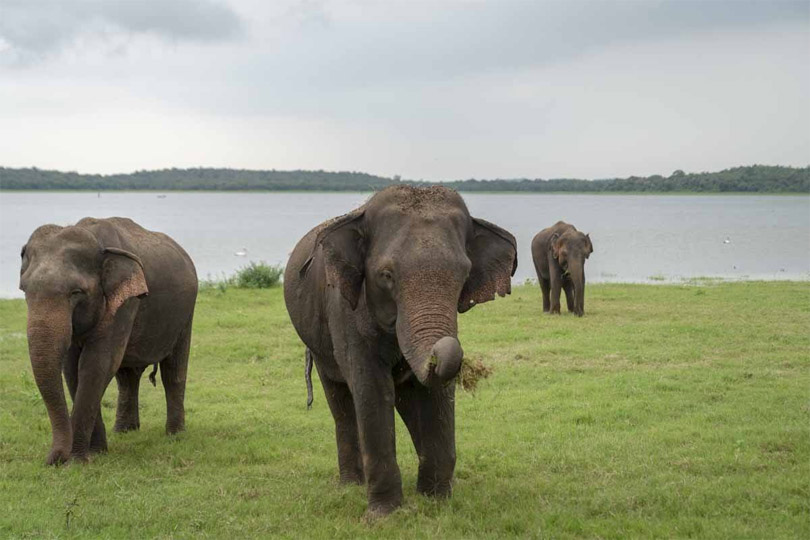
Kaudulla National Park
- Area: about 69 km2
- Status: Declared 1 April 2002
- Main entrance: from Gal Oya town, off the Habarana to Trincomalle Road (route A6) or off the Minneriya to Polonnaruwa road (route A11)
- Travel time from PRS (monkey camp): about 75 minutes
Geography and habitat:
The park surrounds the Kaudulla reservoir. The topography is mostly flat with two long irrigation channels plus three streams running through it: the Gal Oya, Aluth Oya and Hathares-Kotuwa Oya. The western ridges of the Habarana mountains form one border of the park. The flora is dry evergreen forest with many riverine habitats supporting large trees of kumbuk (Terminalia arjuna), madan (Syzigium cumini), and attika figs (Ficus racemosa). Extensive grassland encircle the lake during dry season (June to October).

History and culture:
The Kaudulla reservoir was built by Queen Bisobandara (sister of King Mahasen) in the 3rd century.She is considered a deity by the local people, and a temple in her commemoration attracts devotees, especially after the rice harvest in March and October. The famous Medigiriya temple complex and archaeological reserve are only 3 km from the lake bund of the Kaudulla reservoir.

Wildlife:
The main attraction of this park is the elephants that are most easily observed during the dry season, from June to October, as the herds come to drink and forage on the extensive grasslands exposed by the receding waters of the lake. Elephants use the Kaudulla Park as a corridor between the Minneriya and Somawathie National Parks. The park is also known for its many crocodiles (Crocodiles palustris). The riverine forests are prime habitat for the four species of primates and many other creatures that require easy access to a perennial supply of water and lush vegetation. All animals typical of the dry zone have been recorded. See Wildlife.
